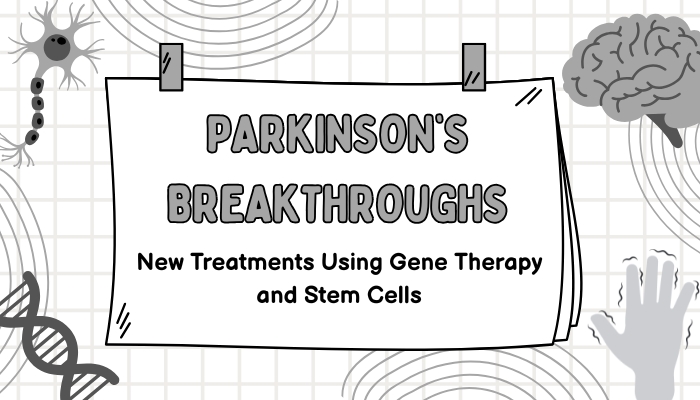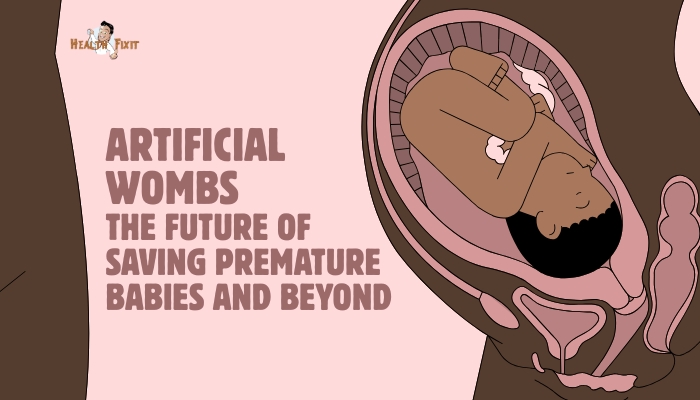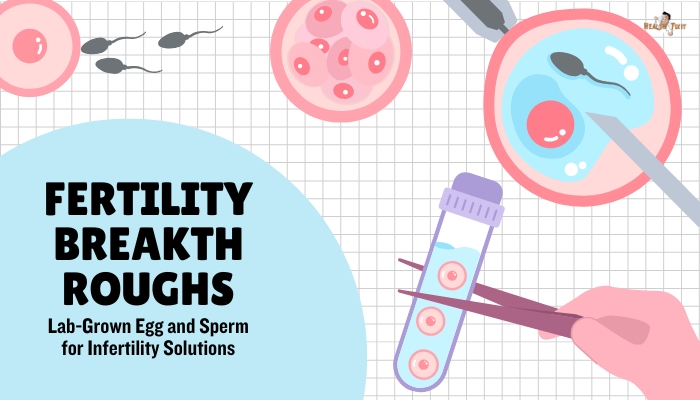Introduction
Regenerative medicine seeks to repair or replace tissues that have been damaged by disease or injury.
While many breakthroughs have focused on skeletal muscle, bones, and organs, two fundamental structures—blood vessels and nerves—are increasingly studied.
If doctors could grow functional vessels and nerves in the lab, they might treat cardiovascular diseases, peripheral nerve damage, spinal cord injuries, and more.
That goal is now within reach, thanks to tissue engineering, biomaterials, stem cell research, and 3D bioprinting.
This article explores how scientists construct lab-grown blood vessels and nerves, their clinical potential, and remaining challenges to widespread therapeutic use.
Why Engineer Blood Vessels and Nerves?
Blood Vessels: The Body’s Transport Network
Blood vessels form a vast network delivering oxygen, nutrients, and signaling molecules to tissues while removing waste.
When major vessels are blocked or damaged—due to atherosclerosis, trauma, or congenital anomalies—tissue dies or malfunctions. Synthetic grafts (e.g., for bypass surgery) have existed for decades, but small-diameter vessels (< 6 mm) remain problematic.
Many synthetic vascular grafts fail due to clotting or scarring. Lab-grown vessels using patient-specific cells could reduce rejection, improve long-term patency, and reduce the need for repeated surgeries.
Nerves: The Communication Lines
Nerves relay electrical impulses that coordinate motion, sensation, and organ function. Peripheral nerve damage, for example, can cause paralysis or sensory loss. Current treatments—such as autografts or nerve conduits—often yield incomplete recovery. Spinal cord injuries similarly show limited natural regeneration. Biomimetic nerve scaffolds seeded with cells or growth factors could guide axon regeneration, potentially restoring significant function.
Engineering Blood Vessels: Approaches and Advances
Decellularized Scaffolds
One approach to build vessels is to decellularize donor or animal arteries, removing the original cells but preserving the extracellular matrix. Then:
- Re-endothelialization: Researchers seed the structure with the patient’s endothelial cells (which line vessels) to minimize clotting and immune rejection.
- Smooth Muscle Integration: Additional layers of smooth muscle cells can help mimic natural vessel elasticity.
Early trials show that decellularized scaffolds can remodel in patients and develop healthy vessel walls. This method harnesses a natural matrix shape but depends on consistent donor tissue supply and strict processing.
Biopolymer Scaffolds
Alternatively, labs design synthetic or natural polymers (e.g., collagen, fibrin, polylactic acid) into tubular scaffolds that approximate vessel geometry:
- Electrospinning: A high-voltage process that spins polymer fibers into a porous, tube-shaped scaffold. Cells attach and proliferate on the fiber network.
- Hydrogel Molding: Gels loaded with cells can be shaped into vessels, encouraging cell-driven remodeling and matures into a robust structure.
Self-Assembled Tissue Constructs
Some scientists use cell-sheet engineering, where smooth muscle or endothelial cells create their own extracellular matrix in sheets. These sheets are then wrapped into tubes that spontaneously adhere, forming layered vessel walls. Over time, the structure stabilizes without synthetic materials, potentially reducing foreign body reactions.
Clinical Applications
- Coronary Artery Bypass Grafts (CABG): Lab-grown vessels could replace the saphenous vein or internal mammary artery that surgeons currently harvest.
- Peripheral Artery Disease: Engineered vessels might restore blood flow in the legs, preventing amputations.
- Vascular Access: Patients on dialysis could benefit from grafts that resist infection or blockage better than standard synthetic materials.
Some engineered vessels have reached early clinical trials or compassionate use, showing encouraging patency rates and fewer complications than synthetic grafts.
Growing Nerves: Strategies for Regeneration
Nerves are more complex than vessels, requiring proper alignment of axons and support cells (Schwann cells, for example). Two main regenerative tactics involve either guiding nerve regrowth with conduits or replacing nerve segments entirely with engineered constructs.
Nerve Conduits and Scaffolds
A nerve conduit is a tubular device bridging a nerve gap. It provides:
- Physical Guidance: Aligning regenerating axons from the injured proximal stump to the distal stump.
- Cellular or Growth Factor Delivery: Some conduits embed Schwann cells or neurotrophic factors (e.g., NGF, BDNF) to enhance outgrowth.
- Bioabsorption: Many modern conduits are biodegradable, degrading once the nerve has reestablished continuity.
Biomaterials like collagen, chitosan, or synthetic polymers can form these conduits. More advanced designs incorporate microchannels or 3D-laminated structures that better mimic the nerve’s internal fascicle arrangement.
Tissue-Engineered Nerve Grafts
When large nerve defects exist, direct reapproximation might be impossible. Engineers build nerve grafts by seeding patient-derived Schwann cells or stem cells onto scaffolds shaped to match the lost segment:
- Stem Cells: Mesenchymal stem cells or induced pluripotent stem cells can be directed to produce supportive factors or differentiate into Schwann-like cells.
- Electrical Stimulation: In vitro, mild electrical currents can prompt better neural differentiation and alignment, enhancing conduction.
Clinical Relevance
- Peripheral Nerve Injuries: Motor vehicle accidents, battlefield trauma, or industrial accidents that sever nerves could see better outcomes than standard nerve autografts.
- Brachial Plexus: Large, complicated nerve trunk injuries might be repairable via custom scaffolds.
- Spinal Cord: Although more complex, bridging certain partial spinal lesions with cell-laden scaffolds is under intense research.
Though complete spinal regeneration remains challenging, partial improvements in function or sensation can be life-changing for those with severe paralysis.
Integrating Vessels and Nerves into Tissue Engineering
For lab-grown organs or large tissue grafts to survive and function, they need both a vascular supply and innervation:
- Co-Culture Systems: Endothelial cells and nerve cells cultured together can form small vascular networks alongside early neural pathways.
- Bioprinting: 3D printing techniques deposit different cell types in precise patterns, building microvasculature, nerve channels, and parenchymal cells concurrently.
- Organoids: Miniaturized organ constructs can contain rudimentary vasculature and nerve connections, offering a testbed for drug screening or disease modeling.
Merging these strategies fosters more realistic tissue growth and sets the stage for advanced grafts that fully replace lost function.
Challenges and Future Directions
Achieving Long-Term Function
Even if vessels or nerves are constructed successfully, ensuring they behave like natural tissues over years is challenging:
- Remodeling: Engineered grafts must adapt to changing pressures, flow rates, or mechanical stress, especially in dynamic vessels and nerves.
- Host Integration: The body’s immune system must accept or remodel the graft, requiring careful material and cell selections.
- Maturation: Nerve conduction velocities or vascular reactivity might take months to reach normal levels, so sustained monitoring is crucial.
Scale and Manufacturing
Producing small nerve conduits or short vessel segments is one thing; scaling to large segments or entire organ vasculatures is another. Mass production demands:
- Standardized Biomaterials: Sourcing consistent materials that meet regulatory requirements.
- Automation: Robotics and advanced printing systems to reduce labor intensity and errors.
- Quality Control: Real-time imaging or sensors that confirm cell viability, mechanical properties, and sterility at each step.
Regulatory Path
New medical devices or cell-based therapies face stringent approval hurdles. Agencies require robust clinical trial data on safety, efficacy, and durability. This can be a lengthy process, especially for personalized or autologous tissue products.
Cost and Accessibility
Sophisticated tissue engineering is expensive, from cell isolation to scaffold design. Price could limit initial availability to specialized centers or high-income regions. Over time, improved manufacturing and broader competition might reduce costs and expand access.
Case Examples and Clinical Trials
Bioengineered Vessel Trials
- Humacyte: An American biotech developing decellularized human acellular vessels (HAVs). Early trials in dialysis patients show the grafts can integrate well and reduce complications like infection. Ongoing Phase III trials aim to confirm these findings.
Nerve Guide Trials
- Neurogen®: A collagen conduit for bridging small peripheral nerve gaps. FDA-cleared for nerve injuries of up to a few centimeters. Some data show improved sensory and motor recovery compared to leaving gaps unaddressed.
3D Printed Aneurysm Models
While not a direct tissue implant, labs print replicas of patient aneurysms with living cells to test stent designs or drug responses. This demonstrates the synergy between vascular tissue engineering and personalized medicine.
Broad Impact on Healthcare
If lab-grown blood vessels and nerves prove widely successful, the implications are profound:
- Reduced Amputations: Chronic limb ischemia or severe peripheral nerve damage might be reversed by using functional grafts, saving limbs.
- Faster, More Complete Recoveries: Instead of nerve autografts (removing healthy nerves from elsewhere), a tissue-engineered solution spares patients from donor site morbidity.
- Lower Healthcare Costs Long-Term: Even if initial procedures are expensive, preventing complications, infections, and repeated surgeries can save costs overall.
- Advances in Complex Organ Engineering: Hearts, kidneys, and other organs rely on robust vasculature and nerve supply. Mastering vessel and nerve engineering paves the way for whole-organ bioprinting.
Practical Tips for Patients and Providers
For individuals with vascular or nerve damage:
- Ask About Clinical Trials: Check reputable hospitals or research centers that may offer experimental tissue-engineered graft solutions if standard treatments fail.
- Weigh Pros/Cons: Although early results can be exciting, these therapies remain in development and carry unknown risks or variable outcomes.
- Maintain Overall Health: Managing conditions like diabetes, high cholesterol, or smoking can enhance the success of any graft or natural healing.
- Stay Informed: Tissue engineering evolves rapidly. New techniques or product approvals can emerge quickly, possibly changing the standard of care.
For healthcare providers:
- Interdisciplinary Collaboration: Surgeons, bioengineers, cell biologists, and material scientists must coordinate for best outcomes.
- Education: Understanding how these grafts function—mechanical properties, immunology, regulatory status—keeps providers prepared to integrate them into treatment plans.
- Long-Term Follow-Up: Monitoring signs of graft patency or nerve conduction over time is essential, adjusting therapy if needed.
Conclusion
Regenerating blood vessels and nerves in the lab can significantly advance modern medicine. Tissue-engineered vascular grafts could prevent limb loss, reduce complications in coronary bypasses, and open new avenues for dialysis access.
Engineered nerve conduits and scaffolds, meanwhile, offer hope for individuals suffering from peripheral nerve injuries or spinal cord damage.
Though obstacles remain—ensuring functional longevity, scaling manufacturing, and meeting regulatory standards—the consistent progress in biomaterials, stem cell biology, and 3D printing underscores the field’s dynamic potential.
As breakthroughs transition from the lab to clinical trials, more patients may soon benefit from engineered vessels or nerves that restore essential biological functions.
The next decade could see these emerging solutions become standard practice, reshaping how clinicians approach vascular and nerve repair, saving limbs, restoring sensation, and improving countless lives.
References
- L’Heureux N, Dusserre N, Konig G, et al. Technology insight: the evolution of tissue-engineered vascular grafts—from research to clinical practice. Nat Clin Pract Cardiovasc Med. 2007;4(7):389–395.
- Dahl SL, Kypson AP, Lawson JH, et al. Readily available tissue-engineered vascular grafts. Sci Transl Med. 2011;3(68):68ra9.
- Omura T, Terasaka T, Watanabe E, et al. Tissue engineering in peripheral nerve reconstruction: a structured review. Cells Tissues Organs. 2020;210(2):80–93.
- Spencer T, Sharpe R. Nerve regeneration across polymeric nerve conduits: systematically bridging the nerve gap. Tissue Eng Part B Rev. 2021;27(5):521–535.
- Hudson TW, Zawko S, Deister C, et al. Optimized acellular nerve graft is immunologically tolerated and supports regeneration. Tissue Eng. 2004;10(11-12):1641–1651.
- Pashneh-Tala S, MacNeil S, Claeyssens F. The tissue-engineered vascular graft—a patent perspective: 1980 to 2020. Tissue Eng Part B Rev. 2015;22(1):68–86.
- Moore MJ, Friedman JA, Lewin NE, Lee YS. Tissue engineering for spinal cord repair: Achievements and future perspectives. Crit Rev Biomed Eng. 2021;49(2):93–108.
- Saldin LT, Cramer MC, Velankar SS, White LJ, Badylak SF. Extracellular matrix hydrogels from decellularized tissues: structure and function. Acta Biomater. 2017;49:1–15.
- Ma HS, Davis B, Lo AY. Tissue engineering nerve scaffolds: bridging the gap. Annu Rev Biomed Eng. 2020;22:289–313.
- Hasanova GI, Nor HM, Saleh F, et al. Fabrication of aligned scaffolds for nerve regeneration. Tissue Eng Part C Methods. 2021;27(12):689–703.







